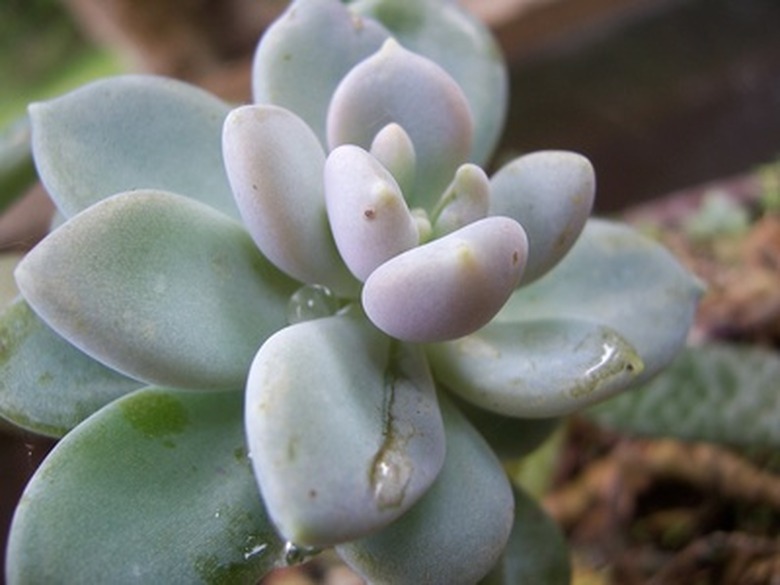Succulent Plant Diseases
Native to deserts and arid regions, succulents have plump, fleshy stems and leaves that hold water, which helps carry the plant through times of drought. All types of cactus are succulents, but not all succulents are cacti. Succulents are not bothered by many pests or diseases, although due to their water-retaining nature, they are susceptible to fungal diseases brought on by excessively moist growing conditions or overwatering.
Bacterial Soft Rot
Bacterial soft rot is most often caused by the pathogen Erwinia. Symptoms include the collapse of stems and branches and the interior plant tissues becoming soft and mushy. It is also sometimes referred to as "damping off disease" and most often affects small seedlings started indoors under lights. There is no cure, and affected plants should be discarded. Prevent this fungal disease by not overwatering plants and providing them with adequate air circulation.
- Native to deserts and arid regions, succulents have plump, fleshy stems and leaves that hold water, which helps carry the plant through times of drought.
Powdery Mildew
Caused by the bacterium Sphaerotheca, powdery mildew affects almost every type of herbaceous plant, as well as shrubs and trees. Symptoms of powdery mildew on succulents include scabby or corky areas on leaves, rather than the white powder seen on herbaceous plants and trees. Treat powdery mildew by applying thiophanate methyl or triadimefon.
Black or Sooty Mold
Black or sooty mold is a fungal infection often seen on plants that are also infected with pests such as whitefly or mealybugs. The honeydew or nectar produced by the pests attracts and feeds the fungus. Although it is not usually harmful to healthy succulents, black or sooty mold will most often attack weakened or damaged plants. It is also more likely to infect succulents growing in excessively wet soil conditions.
- Caused by the bacterium Sphaerotheca, powdery mildew affects almost every type of herbaceous plant, as well as shrubs and trees.
- Symptoms of powdery mildew on succulents include scabby or corky areas on leaves, rather than the white powder seen on herbaceous plants and trees.
Diseases Of Succulents
Succulents can become the victims of viral infections. Most viruses are spread to succulents through insects feeding on the sap. Controlling insects is a big part of controlling the spread of viruses, as is keeping grafting knives disinfected. Nothing can be done once a succulent catches a virus; the plant must be discarded. To reduce alkalinity, citric or acetic acid — vinegar — can be added, but potassium dihydrogen phosphate adds acid and minerals as well. Saddleback College lists iron defiency as being one of the more common deficiencies in succulents, causing them to turn yellow. These conditions include over-watering, etiolation, desiccation, sunburn and pot-bound roots. It causes splitting and sometimes rot. Under-watering your succulent can result in desiccation or drying up.
- Succulents can become the victims of viral infections.
- Most viruses are spread to succulents through insects feeding on the sap.
